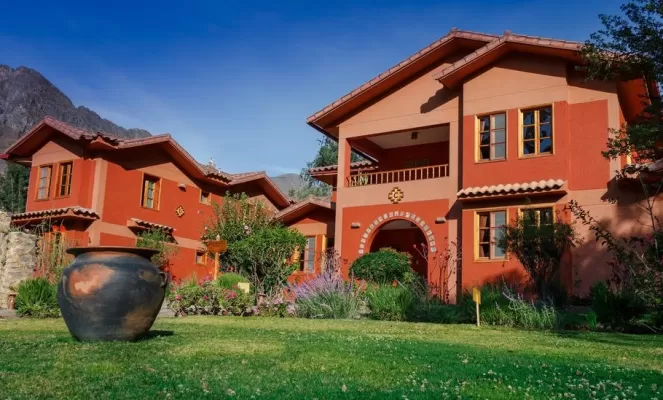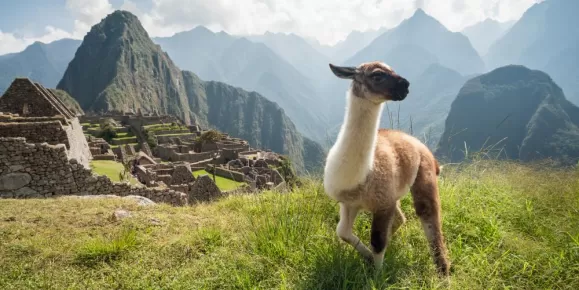Pakaritampu is located in Ollantaytambo, 56 miles (90 Kms) away from Cusco, in the heart of the Inca's Sacred Valley. It is considered an ideal starting point for beginning tourism in Cusco because it is located at a lower altitude; it is situated few meters away from the train station that will take you in only one hour and a half to Machu Picchu; and it is the starting point of the Inca's trails.
The hotel facilities are formed by four independent buildings. One is for receiving the tourists, enjoying a delicious mate de coca, and using the Internet, fax or telephone for international calls. Another building is for general services: dining room, salon with a chimney, T.V. room, reading room, bar and a gift shop. Finally, the two remaining buildings are rooms with warm wood finishes and picturesque balconies from which you can enjoy an extraordinary view of the Ollantaytambo ruins.
Accommodations and Services:
* 3 stars hotel
* 20 rooms with private bathroom
* Telephone for national and international calls
* T.V. room, salon with chimney
* Reading room
* Restaurant and bar
* Room service
* Laundry
* Safety box
* Internet
In Ollantaytambo, you will be able to see different expressions of architectonic art, culture and Inca cosmology. The main attractions are the Ollantaytambo temple, the Inca town, the great pyramid of Pacaritanpu, the temple of the Condor, the profile of Tunupa, the Cachijata quarry, the fortress of Pumamarka and the site museum.
The pyramid of Pacaritanpu, Marvelous place where the Ayar Brothers myth is described. Monument in pyramidal shape. 150 hectares.
The profile of Tunupa, a stone sculpture in part of the Pinkuylluna mountain, is located in the sanctuary of Ollantaytambo. It represents the Wiraccochan myth.
The temple of the Condor, an amazing sculpture of the temple of the condor is dedicated to Ayar Cachi. Altars built on the base represent a communication link between the man and the cosmos.
In Ollantaytambo, you can visit the high Andean communities of Willoc and Patacancha, characterized by their ancestral life, textiles and agriculture.
Moray was an agricultural research and plant acclimatization center. Its architecture is formed by concentric circles, as an amphitheater in the purest Inca style.
Las Salinas is a set of puddles on the side of a mountain in the Sacred Valley of the Incas, fed by an underwater source.
Operated By:
Pakaritampu










































